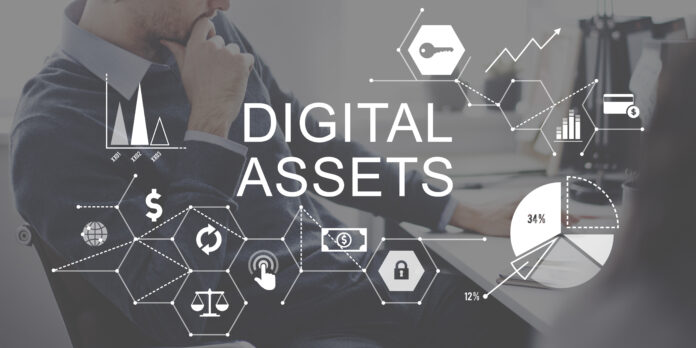The volume and variety of digital assets produced and utilized by enterprises today continue to grow at an explosive pace. From marketing materials and product images to software code and customer data, digital assets are the lifeblood of modern business.
However, many organizations still manage these assets in a fragmented manner across folders, emails, and cloud services. This decentralized approach leads to inefficiencies, inconsistencies, and missed opportunities.
Implementing an enterprise-wide digital asset management (DAM) system has become a strategic necessity to gain control over surging digital content. DAM provides a centralized repository along with powerful capabilities to organize, manage, collaborate on, analyze, and publish digital assets. You can learn more about how the system works at this link – https://brandfolder.com/product/digital-asset-management-software/
This article discusses the role of digital asset management in modern businesses.
The Rapid Proliferation of Digital Assets
It’s impossible to overstate the sheer quantity of digital assets organizations produce and rely on today. From photos, videos, and illustrations to documents, presentations, and spreadsheets, digital assets are the building blocks of modern business.
While physical assets like products and office equipment still play an important role, digital assets power most customer touchpoints. They enable sales teams to create polished collateral to engage prospects, marketers to use digital assets to connect with customers across various channels, and support teams to use them to create knowledge base articles and training materials.
DAM solutions make it easy for these different teams to search for and share digital assets. This facilitates smoother collaboration on asset-intensive initiatives like marketing campaigns, new product launches, brand refreshes, and website redesigns.
The Pitfalls of Decentralized Digital Asset Management
A decentralized approach leads to a number of problems such as:
- Difficulty finding assets when needed for projects, resulting in unnecessary recreating of assets that already exist somewhere. This wastes time and resources which leads to inconsistent workflow.
- Multiple copies of assets stored in different places such as individual computers, shared drives, intranets, and cloud storage make it unclear which version is the definitive, updated, approved one to use.
- Lack of context and metadata for assets. When stored in scattered folders without tags or descriptions, assets become “dark data” that’s unlikely to be discovered in searches.
- No control over asset access and usage. With no restrictions or audit trail, assets can be used improperly or shared outside the organization, leading to legal issues.
- Inability to analyze asset usage and performance. With no centralized system, it’s impossible to see how assets are being leveraged across the organization.
The Role of Digital Asset Management Systems
Digital asset management (DAM) solutions address these fragmentation issues by creating a centralized repository for digital files along with tools for organizing, managing, distributing, and analyzing those assets.
At their core, DAM platforms provide quantifiable benefits for businesses striving to improve efficiency, collaboration, compliance, and customer experience.
The most impactful advantages include:
Boost brand consistency and integrity
DAM systems bring order to fragmented content chaos. It ensures that all teams have access to the same materials by consolidating all brand assets – logos, fonts, images – into a centralized digital vault.
This results in curtailing the use of low-quality or outdated file versions and improving consistency across social channels thus ensuring cohesive brand integrity across consumer touchpoints.
Organize assets into one system
The continuous need for marketing implies the constant creation of new content. However, having numerous files makes it easier to misuse or misplace valuable digital assets.
DAM software’s largest benefit is organization. The platform helps organize digital assets in a centralized repository, allowing users easy access to what they need, regardless of their location. It also classifies assets which help reduce clutter, making it easier to find approved updated versions.
This functionality not only improves efficiency but also streamlines collaborative workflow processes thus increasing employee productivity.
Accelerate content creation through improved collaboration
Creative content creation requires collaboration between teams and partners. However, emailing files back and forth slows down the process as employees wait for responses and assets get lost in inboxes.
Digital asset management (DAM) software enables faster collaboration through integrated workflows. It provides a central hub for assets where all team members can easily access, share, and download the files they need.
With DAM, new campaigns and content can be developed faster. There is no waiting for someone to email the newest logo or image. Internal teams can quickly build on each other’s work and external partners can seamlessly access needed assets.
By centralizing digital assets and integrating workflows, DAM enables frictionless collaboration across organizations which leads to faster time-to-market campaigns.
Ensure compliance and minimize legal risk
In today’s digital era, ensuring compliance is vital. Here are some of the ways that DAM serves as a compliance backbone for modern business;
- Fine-tuned user permissions and system controls reduce the risk of assets being used improperly.
- Audit logs provide visibility into how users are accessing and distributing assets.
- Digital rights management features can prevent unauthorized use or sharing.
- All files are neatly tagged, categorized, and tracked for easy access and verification.
Support sales and marketing channels
Integration of DAM with sales and marketing systems streamlines lead generation and campaign execution. Smooth access to customizable brochures, presentations, and other collateral enables sales teams to convert more prospects while marketing teams benefit from easily sharing assets across channels and analyzing their performance.
DAM Platform Evaluation and Adoption Best Practices
Given the array of strengths DAM systems bring to modern businesses, investing in these platforms is crucial. When assessing and deploying DAM, some of the best practices include:
- Defining organizational needs and use cases to identify must-have functionality from user permissions to integrations.
- Developing a detailed implementation roadmap and rollout schedule across business units.
- Creating and enforcing digital asset governance policies on topics like tagging standards, access controls, and integration with other systems.
- Providing extensive DAM training and support to drive user adoption across teams.
Conclusion
As businesses become more data-driven and global in nature, the need for agile digital asset management will continue intensifying. Organizations that invest in modern DAM platforms will gain a distinct competitive advantage through improved efficiency, collaboration, and customer experiences.
With digital assets now powering virtually every aspect of business, DAM has become an indispensable strategic platform for modern enterprises.





